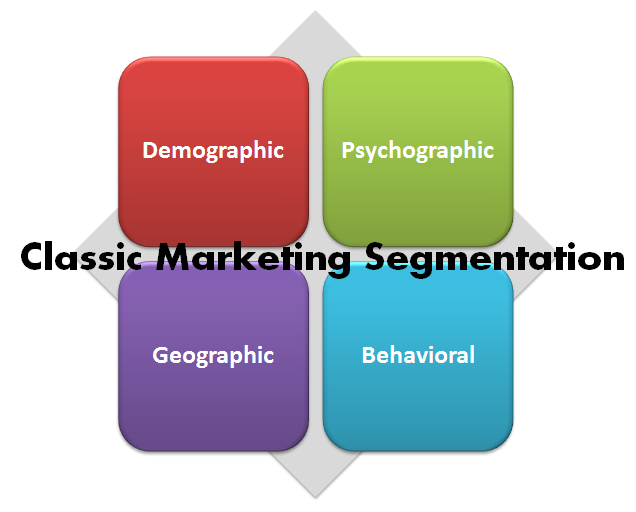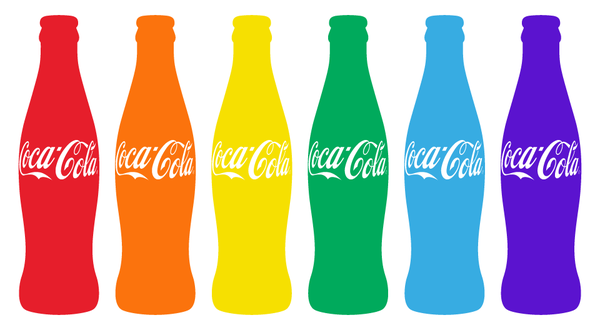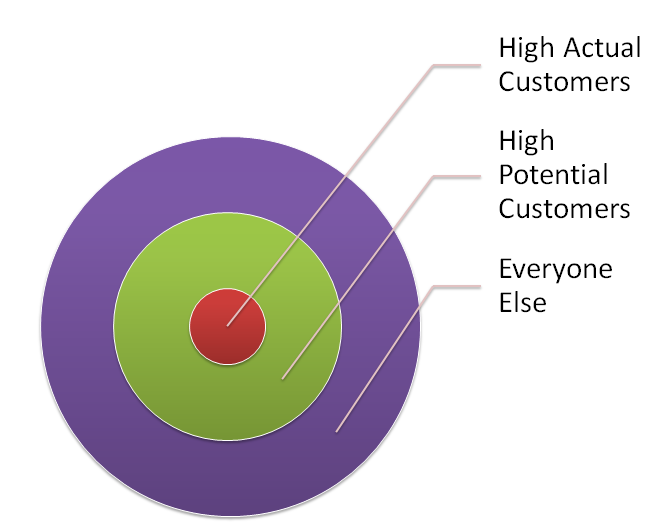Advantexe’s Business Acumen learning engagements utilize business simulations to build skills in a risk-free environment. One of the most important learning points participants take from these programs is the appreciation and understanding of customer segmentation, and, more importantly, how to reach identified segments with the right marketing message in support of a business strategy.
risk-free environment. One of the most important learning points participants take from these programs is the appreciation and understanding of customer segmentation, and, more importantly, how to reach identified segments with the right marketing message in support of a business strategy.
Classic Customer Segmentation
Readers of this blog know that we are strong proponents for keeping business acumen skills simple and applicable. Last week, we questioned why so many so-called experts make business strategy so complicated when there are a few very simple and effective tools to use to develop and execute strategy.
Most business and marketing professionals follow one of four classic segmentation techniques.
Demographic segmentation is defined as segmenting your potential market by the way the market is composed of people's perspectives. Age, gender, sexual orientation, and income are just a few ways of creating a demographic segmentation approach.
Geographic segmentation is defined as segmenting your potential market by where they are located. North American, US, Northeast US, New York, New York City, and Zip Code 10001 are just a few ways of creating a geographic segmentation approach.
Psychographic segmentation is defined as segmenting your potential market by customer personality traits, values, attitudes, interests, and lifestyles. Within a few hours of the Supreme Court’s decision to legalize same-sex marriage, proactive marketers started running ads and social marketing appealing to lifestyle segments that support same-sex marriage and potentially will purchase their products.

Behavioral segmentation is defined as segmenting your potential market by the behaviors of different customer types. Advantexe Learning Solutions utilizes a behavioral-based segmentation approach in most of our business simulations. For example, our core global business simulation AGES segments customers in different regions and markets by Cost Conscious Customers, Solution Oriented Customers, and Sophisticated Customers.
Segmentation in the Digital Age
In classic marketing, customers are segmented into groups with like buying patterns. Marketers focus on trying to deliver the right message to that group of customers and hope for the best.
In digital marketing, no two customers are exactly the same; there is no clumping, grouping, or general assumptions about what makes buyers buy. That is the core and central theme of personalized digital marketing. And just like how execution is the driver for classical marketing, execution of personalized digital marketing is even more important. Emerging digital marketing companies are developing tools, platforms, and strategies that enable retailers and brand leaders to reach their potential customers by using mobile technologies. Each “touch” to a potential customer is customized and based on a unique set of preferences that can be accelerated in the moment.
As we were thinking about this evolution of segmentation strategy, it occurred to us that this “in-the-moment digital catalyst approach” still has some foundation in classic marketing, but with a few dramatic name changes.
I present a new way of thinking about customer segmentation in the digital age:

The High Actual Customer Segmentation is a segment that wants to buy, has made a decision to buy, but hasn’t decided which brand to buy from yet. Customized and personal digital marketing is the perfect solution for this customer segment.
The Potential Customer Segmentation is a segment that has thought about buying but hasn’t had the full reason or desire to yet. Customized and personal digital marketing is a great tool for this segment because some sort of additional value proposition like a coupon or one-time discount can be the deciding factor that turns the potential customer into an actual customer.
Everyone Else is the segment you don’t waste your marketing dollars on. They are most likely not going to buy your product and the cost to know who is not going to buy your product is a much greater investment than the cost wasted on them trying to convince them to buy a product they are never going to buy.
As we head into the second half of 2015 and beyond, Advantexe’s Simulation Design Teams are going to make adjustments and include different ways of segmenting markets to help develop more enhanced business acumen skills in the digital age. Stay tuned for more updates!




